Biodiversity is referred to as the variation of plant and animal species in a particular habitat. Species evenness and species richness form the major components of biodiversity.
India is known for its rich biodiversity and has 23.39% of the geographical area covered by forests and trees.
Biodiversity Hotspots
- Biodiversity hotspots are defined as regions “where exceptional concentrations of endemic species are undergoing an exceptional loss of habitat”.
- Biodiversity hotspots are regions with high species richness and a high degree of endemism.
- The concept of biodiversity hotspots was developed by the Norman Myers in 1988 when he identified that the tropical forest losing its plants species as well as habitat.
- IUCN prepares ‘Red Data Book’. There are 36 areas around the world that are qualified as Biodiversity hotspots. These hotspots represent only 2.3% of the total Earth’s land surface, yet more than 50% of the world’s plant species and 42% of all terrestrial vertebrate species are endemic to these areas.
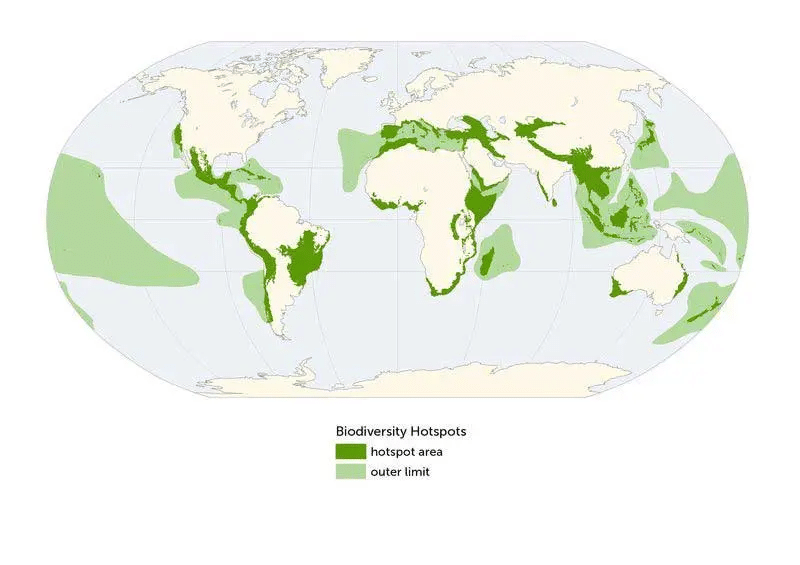
These hotspots are important because Biodiversity underpins all life on Earth. Without species, there would be no air to breathe, no food to eat, no water to drink. There would be no human society at all. And as the places on Earth, where the most biodiversity is under the most threat, hotspots are critical to human survival.
Criteria to qualify as a Biodiversity Hotspot
According to Conservation International, a region must fulfill the following two criteria to qualify as a hotspot:
- It must have at least 1,500 vascular plants as endemics which are to say, it must have a high percentage of plant life found nowhere else on the planet. A hotspot, in other words, is irreplaceable.
- It must have 30% or less of its original natural vegetation (It has to have lost at least 70% of its original habitat). In other words, it must be threatened.
Biodiversity hotspots in India
There are major four biodiversity hotspots in India:
- Himalaya: Includes the entire Indian Himalayan region (and that falling in Pakistan, Tibet, Nepal, Bhutan, China, and Myanmar).
- Indo-Burma: Includes entire North-eastern India, except Assam and Andaman group of Islands (and Myanmar, Thailand, Vietnam, Laos, Cambodia, and southern China)
- Western Ghats and Sri Lanka: Includes entire Western Ghats (and Sri Lanka).
- Sundalands: Includes Nicobar group of Islands (and Indonesia, Malaysia, Singapore, Brunei, Philippines).
Eastern Himalayas, which was originally part of the Indo-Burma Biodiversity Hotspot and included Bhutan, north-eastern India, and southern, central, and eastern Nepal.
In 2004, a hotspot reappraisal classified the region as part of two hotspots: Indo-Burma and the newly distinguished Himalaya.
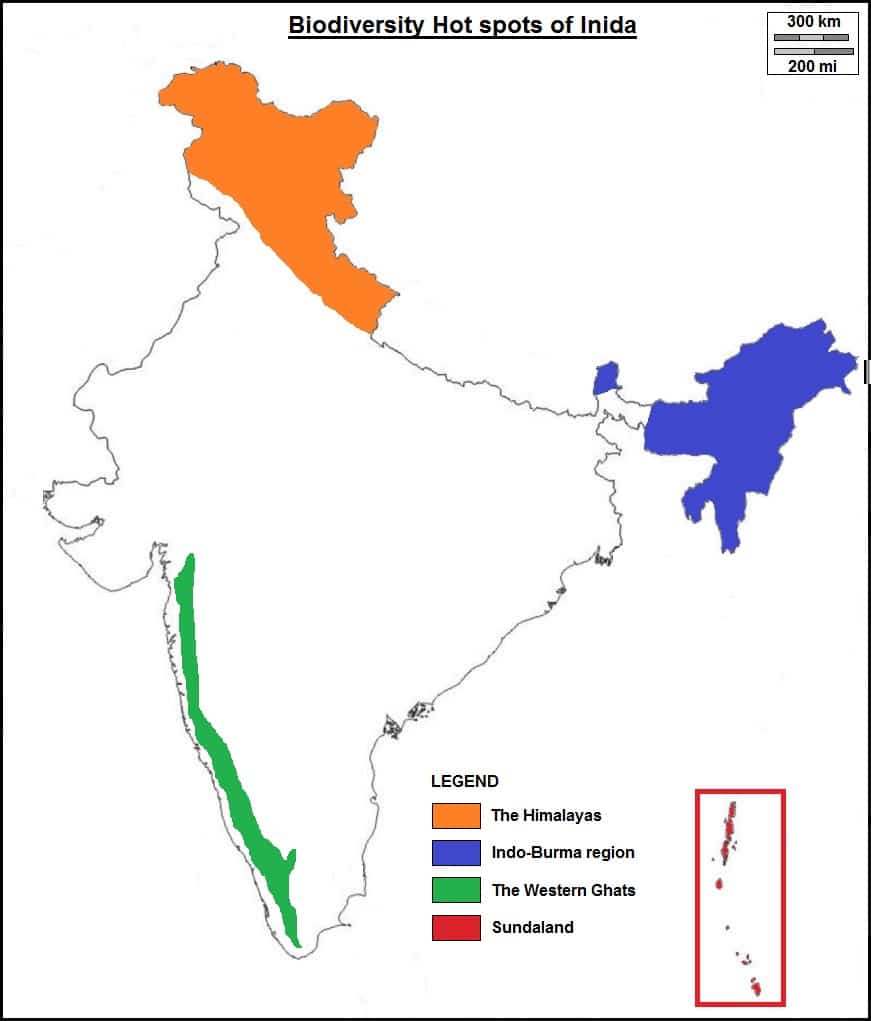
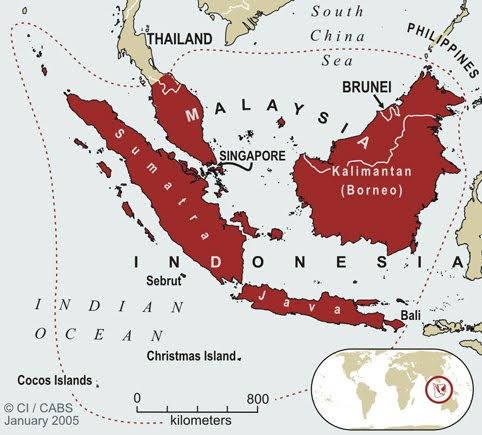
Hottest Hotspots in the world
- Indo – Burma region
- Sundaland
- Philippines
- Western Ghats & Srilanka
- Madagascar
- Eastern arc & coastal forests of Tanzania/Kenya
- Caribbean island
- Brazil’s Atlantic forests
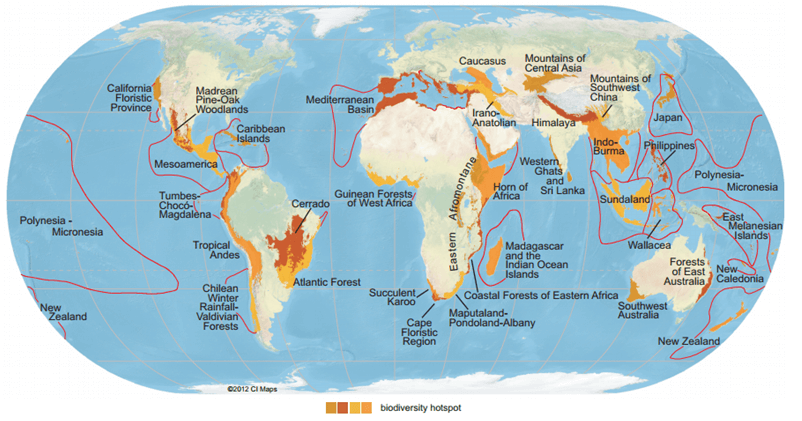
Hope spots
- A Hope Spot is an area of the ocean that merits special protection because of its wildlife and significant underwater habitats.
- Andaman and Nicobar & Lakshadweep Islands have been named as the new “hope spots” by IUCN and Mission Blue, an organization involved in the study of oceans.
- Andamans & Nicobar Island has some of the world’s unique species of birds and plants.
- In the case of Lakshadweep, the coral reefs are quite sensitive to the ocean environment and that needs protection.
Cool-Spots
- ‘Cool-spots’ are the world’s last refuges where high numbers of threatened species still persist.
- Cool-spots could be the result of protection or because of intact habitat that has not been cleared yet.
- All cold spots would benefit from higher levels of protection, conservation management, and restoration.
Biodiversity Hotspot Protection Efforts
Here are some of the ways we can protect these biological hotspots:
- Building significant awareness within the society to work on biodiversity, communities, and livelihoods. You can do that by practicing Social Forestry.
- Mainstreaming of biodiversity, communities, and livelihood into development, planning, and prioritizing of these hotspots.
- Innovative and strong responses to illegal wildlife trade
- Empowering and creating awareness amongst the community to engage in conservation management efforts
- Safeguard the endemic and priority species by mitigating threats to wildlife endangerment!
Biodiversity Hotspots of the World
North and Central America
- California Floristic Province
- Madrean Pine-oak woodlands
- Caribbean Island
- Mesoamerica
- North American Coastal Plain
South America
- Cerrado
- Tropical Andes
- Atlantic Forest
- Chilean Winter Rainfall-Valdivian Forests
- Tumbes-Chocó-Magdalena
Asia-Pacific
Continent wise, it has the most number of ecological hotspots, with a total of 16 important regions ripe with biodiversity.
- Eastern Himalaya
- Western Ghats, India: Srilanka
- Indo-Burma, India, and Myanmar
- New Caledonia
- New Zealand
- Polynesia-Micronesia
- Japan
- East Melanesian Islands
- Philippines
- Sundaland
- Southwest Australia
- Eastern Australia
- Wallacea
- Aucasus
- Irano-Anatolian
- Mountains of Southwest China
Central Asia
- Mountains of Central Asia
Europe
- Mediterranean Basin
Africa
These eight hotspots hold a diverse array of animal and plant life, many of which are exclusive to these areas only.
- Coastal Forests of Africa
- Eastern Afromontane
- Guinean Forests of West Africa
- Horn of Africa
- Madagascar and the Indian Ocean Islands
- Succulent Karoo
- Cape Floral region
- Maputaland-Pondoland-Albany
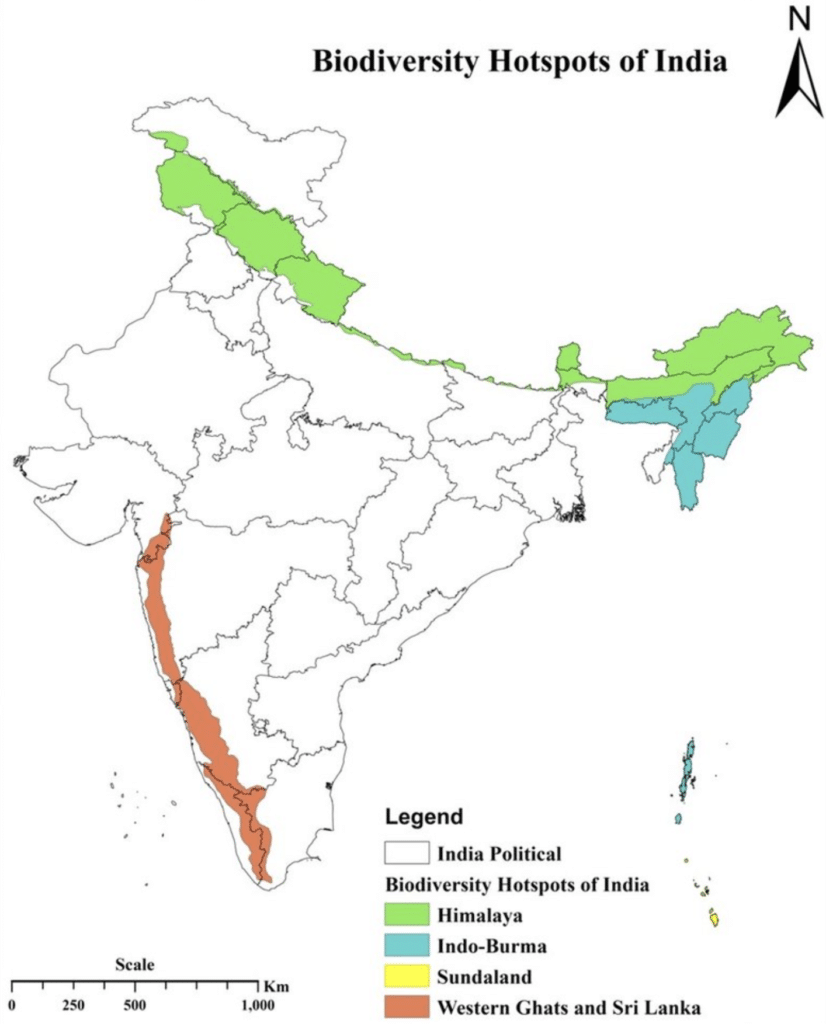
High-Biodiversity Wilderness Area (HBWA)
The High Biodiversity Wilderness Areas (HBWA) approach has been developed by Conservation International (CI). HBWAs consists of 5 of the 24 major wilderness areas that hold globally significant levels of biodiversity, as identified by Mittermeier et al (2002).
The 5 HBWAs are–
- Amazon Basin, Brazil.
- Congo Basin, The Democratic Republic of Congo.
- New Guinea, Indonesia, and Papua New Guinea.
- North American Deserts, Southwest United States, and Mexico.
- Miombo-Mopane Woodlands and Savannas, Zambia.
The intact portion of these areas covers 8,981,000 km2 (76% of their original extent), and 6.1% of the planet’s land area. The geographic boundaries of the HBWAs coincide with the boundaries of several amalgamated WWF ecoregions.
In the past HBWAs were mostly considered to have “low vulnerability” because of their low levels of past habitat loss. However, recent analysis suggests that the high cultivation potential of many HBWAs makes them a target for future agricultural expansion. Cropland expansion is one of the primary threats to biodiversity in tropical countries.
